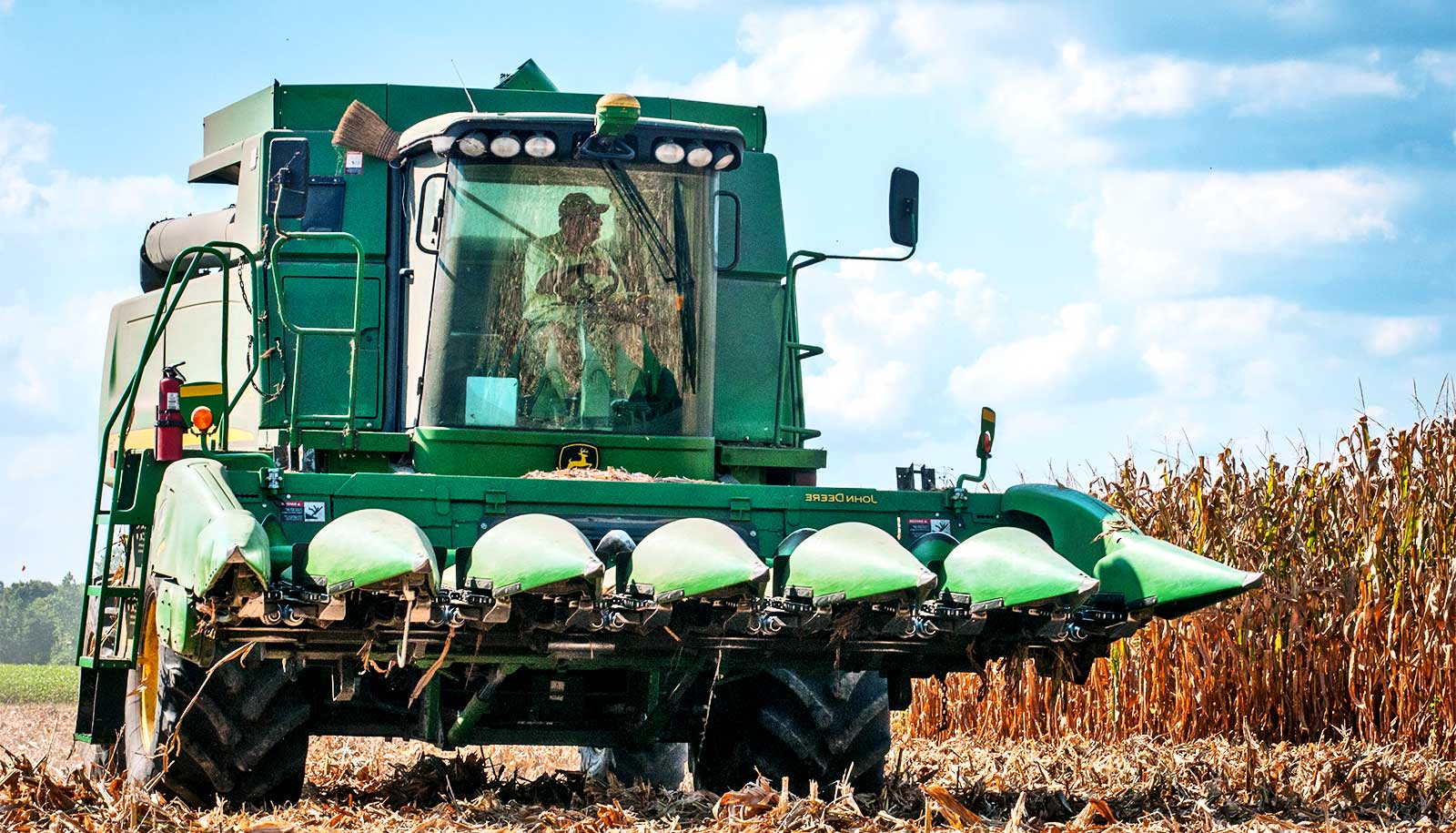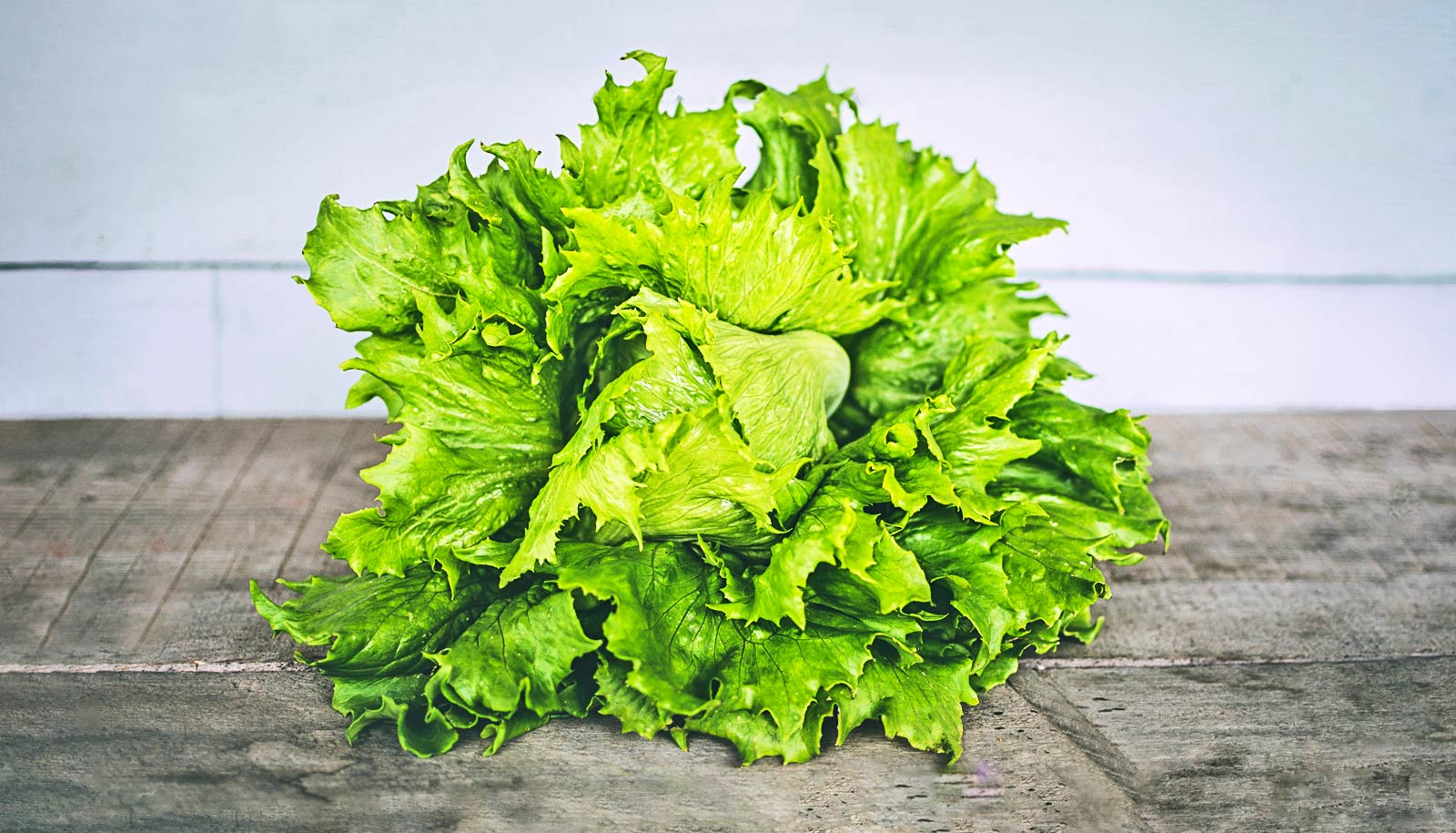Big data can help corn farmers pinpoint specific parts of their fields that consistently produce either good or bad yields, research shows.
This will not only save them time and money, but also solve one of the most widespread environmental problems facing crop-producing regions—nitrogen loss.
“This is the first time anyone has been able to quantify how much small-scale yield variability there is in the United States Corn Belt,” says lead author Bruno Basso, professor of ecosystems science at Michigan State University.
“Our findings allow farmers to know exactly which portions of their farm fields have stable yields—which allows them to better manage their variable fields to save money, reduce fertilizer losses, and lower greenhouse gas emissions.”
Losing nitrogen, losing money
The researchers discovered that almost all fields have certain areas with consistently low or high yields, meaning much of the fertilizer added to low-yielding areas will go unused and be lost to the environment.
The study shows that lost nitrogen from 10 Midwest states totals nearly $1 billion of wasted fertilizer and 6.8 million metric tons of greenhouse gas emissions annually.
The research, which appears in Scientific Reports, is the first to quantify nitrogen losses from the low-producing areas of individual fields. Basso’s team used satellite imagery to measure eight years’ worth of sub-yield fields for 70 million acres of farmland in the Midwest. The analysis provided the researchers with a finely resolved image of the entire Midwest’s corn production, Basso says.
To validate the satellite imagery the team compared the satellite data against 10 years of high-resolution yield data sensors mounted on combine harvesters collected from more than 1,000 farms.
“We color-coded pixels in the images to see where the crop was stable and high-yielding, where it was stable and low-yielding and where it was unstable year-over-year,” Basso says.
“In total, about 50 percent of the subfield areas we analyzed were stable and high-yielding. The underperforming and the unstable areas each represented about 25 percent of total farmland.”
Focus on the high-yield fields
By assessing how much Corn Belt farmers spend on fertilizer that goes unused, the authors conclude that the best outcome—both for farmers and the environment—is to avoid fertilizing the underperforming areas of each field. In fact, Basso says, it may be better from an economic standpoint to leave these areas unfarmed, to plant them with conservation grasses, or in the future, with perennial bioenergy crops.
In any case, Basso says that time and resources should be focused on farming the portions of the fields that are high yielding or that are unstable—high yielding some years, low-yielding others. The unstable areas can be still be managed well with careful in-season management of nitrogen fertilizer, he says.
“By putting big data at the service of sustainability, we are now able to provide farmers with a prescription (Rx) map of nitrogen fertilizer for their fields, which can completely change how and where they focus their efforts,” Basso says.
“Farmers want to be good environmental stewards, and these findings give them an additional way to do so—to avoid over-fertilizing areas of fields that will lose the most nitrogen to groundwater, rivers, and streams. Nobody wins when fertilizer is wasted on areas that won’t produce. Once farmers identify these areas, they can both save money and help the environment.”
The researchers conducted the work at a variety of geographic scales, extending from small-scale research at the Kellogg Biological Station Long-Term Ecological Research site to individual farms in the region to ultimately the entire Midwest.
‘Win-win-win’
“The work demonstrates that overfertilization of consistently low-yield croplands is very costly to the industry and offers a valuable approach to meeting the farming industry goal of precision nitrogen management. Importantly, what’s best for farmers is also best for the environment,” says Colette St. Mary, a director of the National Science Foundation’s Long-Term Ecological Research program.
“The findings provide practical recommendations based on a convincingly complete data set coupled with remote sensing to persuade farmers that matching low crop yields from stable low-yield areas could eliminate seasonal excesses in reactive nitrogen,” says Jim Dobrowolski, National Program Leader for Water at USDA-NIFA.
The research “helps the farmer’s bottom line, while simultaneously reducing greenhouse gas emissions and maintaining water quality. It’s a ‘win-win-win’ solution.”
The US Department of Agriculture’s National Institute for Food and Agriculture, the US National Science Foundation’s Long-term Ecological Research and Dynamics of Coupled Natural and Human Systems Programs, the US Department of Energy’s Office of Science Division of Biological and Environmental Research, and Michigan State University AgBioResearch funded the research.
Source: Michigan State University



